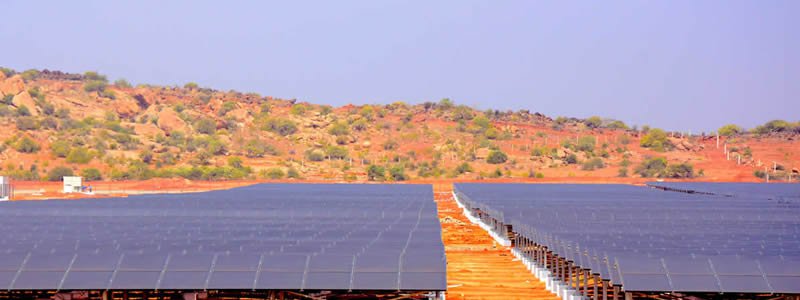
Indian project developers are being advised to aim for diverse portfolios as a way of attracting much-needed foreign investment into the market. “Portfolios with diversified off-takers across federal, state and private counterparties have been most successful with international financial investors,” Jonathan Winer, managing director of Nereus Capital in Mumbai, told Solarplaza.
The advice comes as India’s solar players seek to woo international backers to help fund a highly ambitious generation target of 100 GW by 2022. Currently, for the majority of projects of more than 10 MW, “most of the debt is coming from Indian banks,” said Jasmeet Khurana, head of market intelligence at the analyst firm BRIDGE TO INDIA in a webinar ahead of Solarplaza’s Solar Project Development & Finance Tour India.
The government is keen to change this. But some foreign investors have been fearful of entering the Indian market because of currency fluctuations and off-taker solvency issues, Winer noted. “While there has been significant interest from international institutional investors, this has been tempered somewhat by foreign exchange risks and general concern about off-taker creditworthiness,” he said.
At the end of June, India’s Renewable Energy Ministry moved to address the exchange risk problem by inviting bids for dollar-linked solar power contracts with state-owned NTPC, India’s largest energy conglomerate. “The contracts will pay the rupee equivalent of the dollar tariff determined by the bidding, and NTPC will create a fund to manage the currency risk it takes on,” reported Bloomberg. “The step may lower solar costs by making cheaper dollar-based financing easier to access.”
Even so, the problem of off-taker solvency remains. In some Indian states, energy companies are notoriously short of cash, so the value of their power-purchase agreements is open to question. “Interest rates levied by lenders in traditional project financings have seen marked variations on the basis of credit worthiness of off-takers, which varies from state to state,” cautioned the international law firm Norton Rose Fulbright in Lexology, a legal analysis forum.
The best way to overcome this challenge so far appears to be by building a balanced portfolio to hedge against potential problems. “State distribution companies and their bankability is a risk,” confirmed Khurana. “Central government projects have lower risk.” This does not mean project developers should avoid state-level projects altogether, though. “Lower bankability will give you higher margins because there is less competition,” Khurana noted. Nevertheless, “in states you have to pick and choose your projects.”
On the plus side, experts believe there is likely to be significant international interest in developing solar in India. “The project-level returns from utility-scale solar projects in India represent substantial excess return when compared against similar projects in Europe and North America,” said Winer.
“Certainly, there has been significant capital formation among domestic Indian debt and equity financiers for these projects.” And there are signs the rush may already have started. The Japanese investor Softbank unveiled a USD$20 billion war chest for Indian solar projects at the beginning of July. That alone is enough for 20 GW of generation capacity, Reuters reported.
Solarplaza will take a delegation of 30-35 project developers and investors eager to expand their solar business in India to New Delhi and Hyderabad for a 5-day trade mission on 5-9 October 2015. Find out more.
